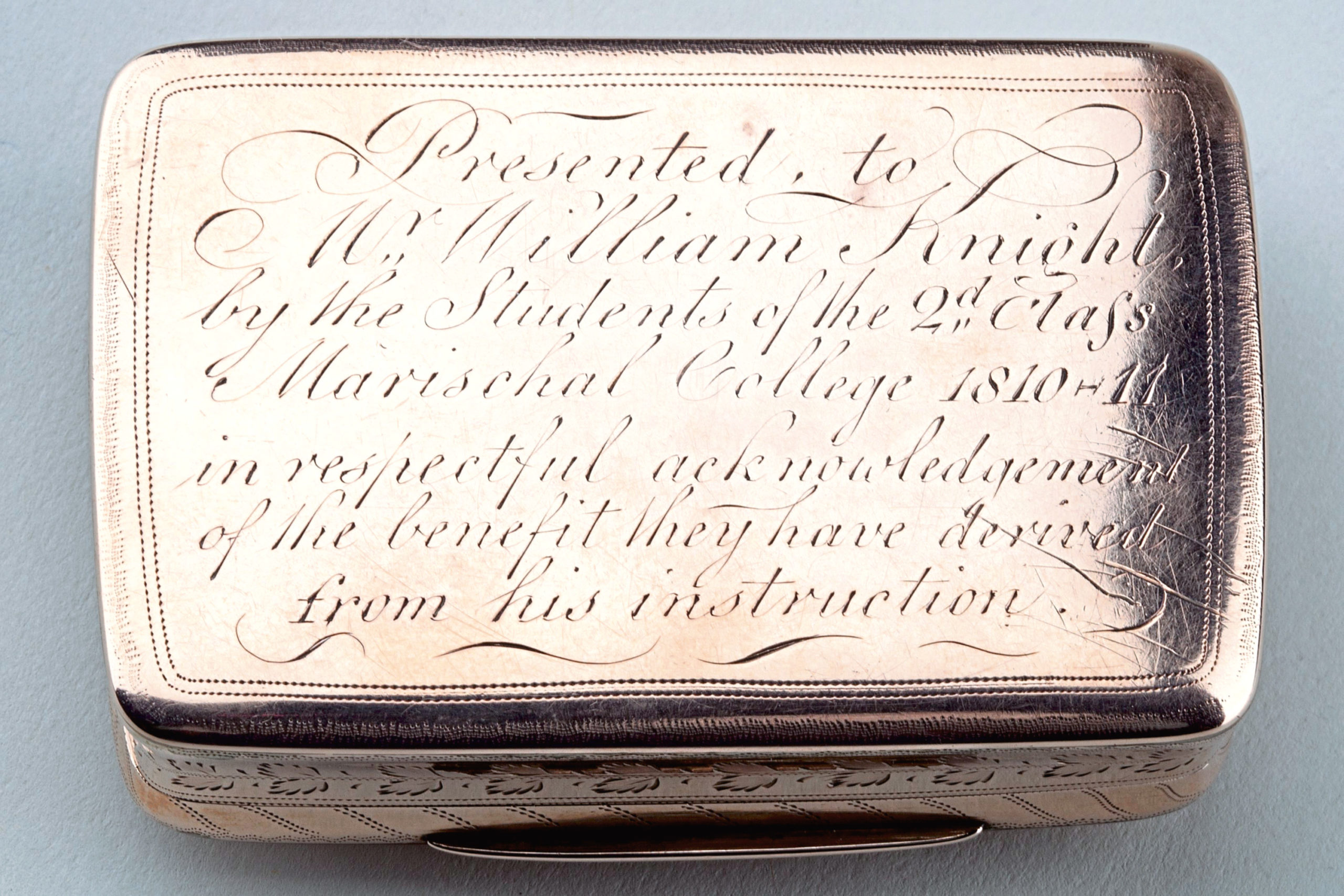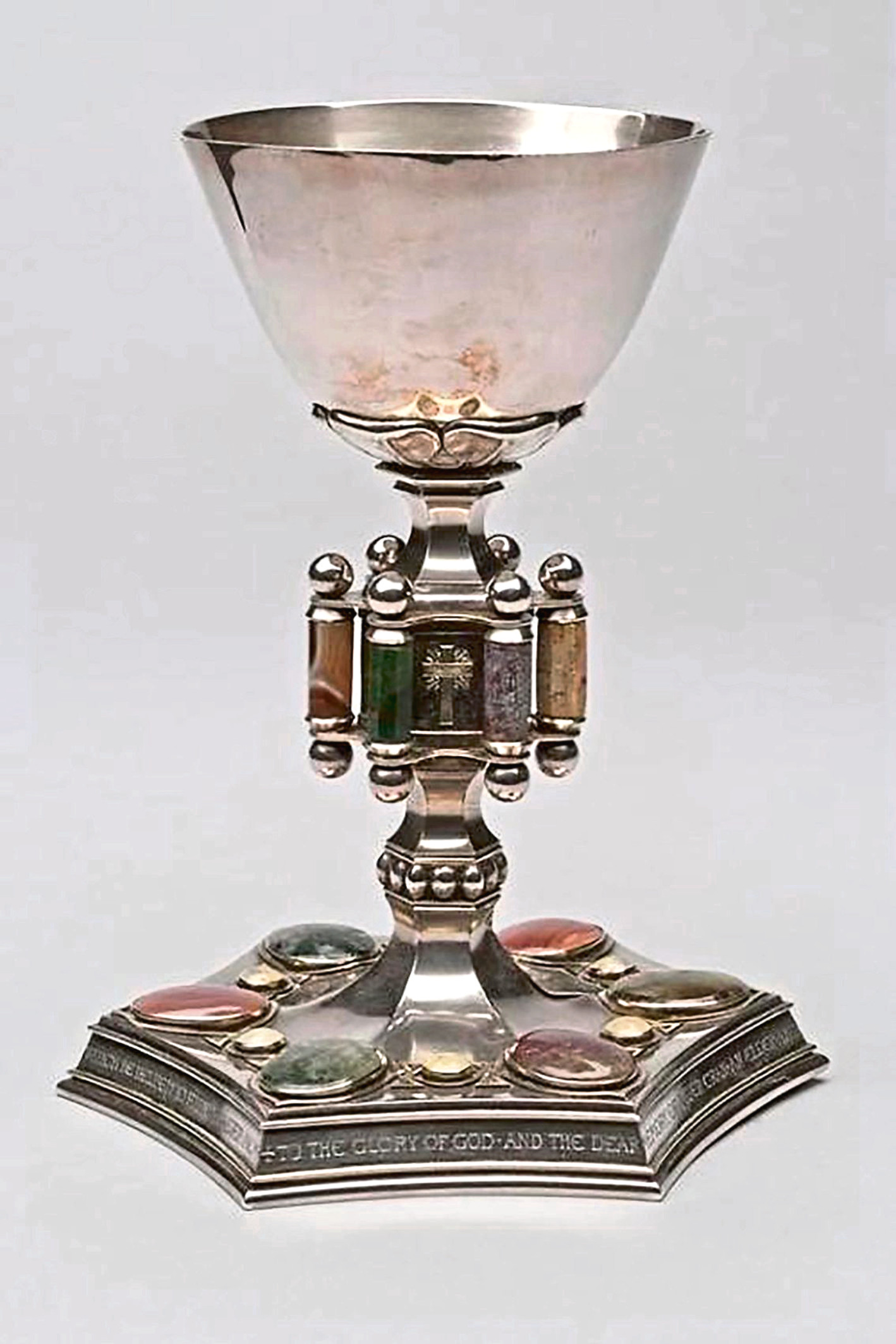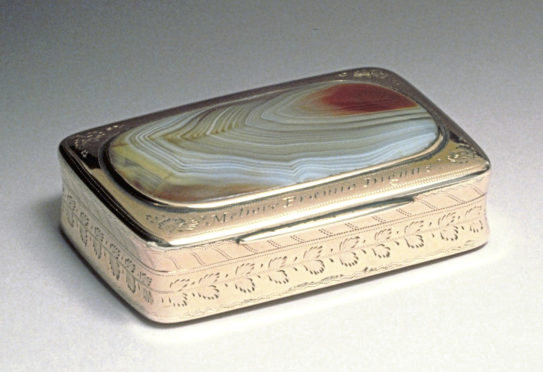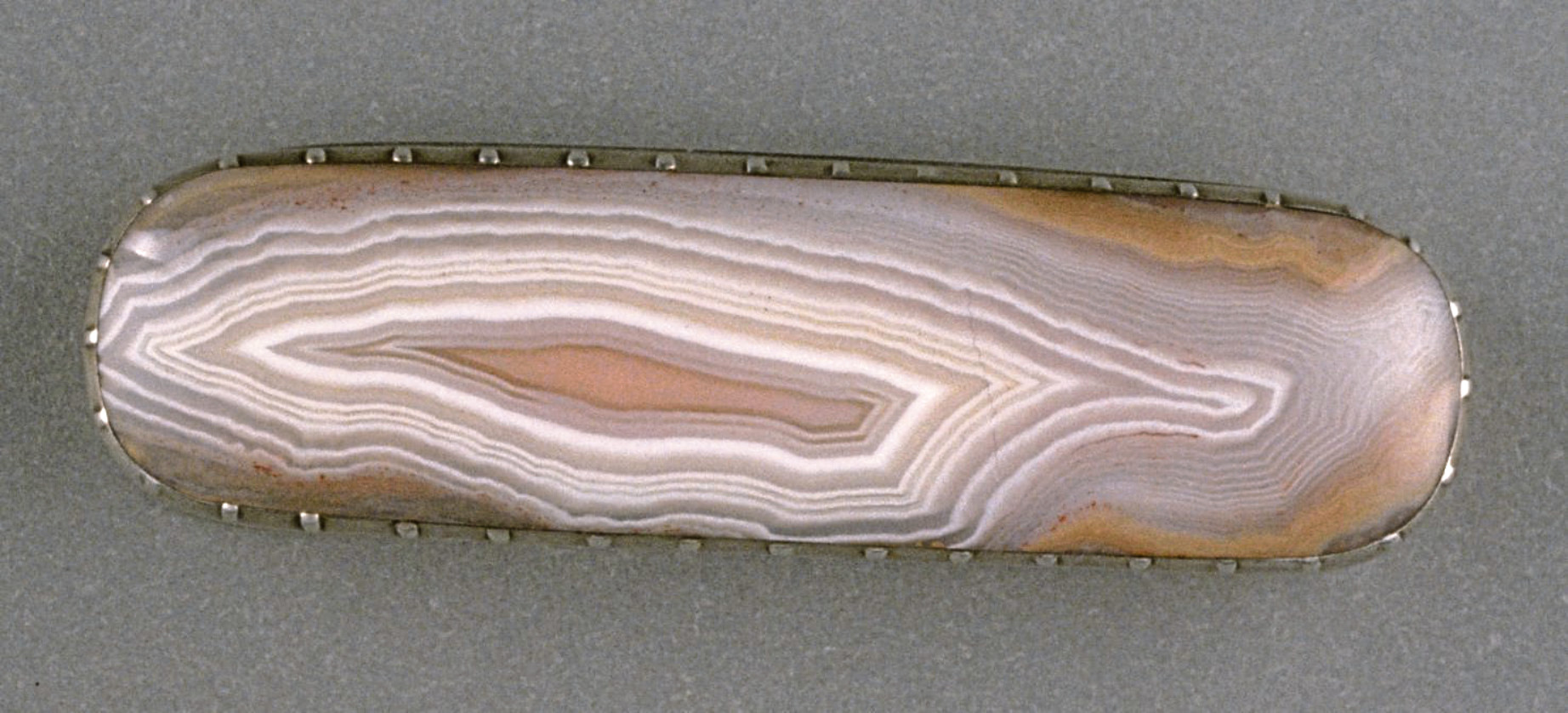Scottish agates have been used in jewellery and other precious objects for more than 200 years.
While agates can be found all over the world, the patterns and variety of colours in Scottish agates have made them an important source of semi-precious stones, particularly at the end of the 1700s.
Agates are most commonly found as nodules within the cavities of volcanic rocks. Formed in cavities once containing gases trapped in the hot lava, the cavities slowly filled with silica-rich fluid, building up layers and layers over thousands of years.
Colour variations result in banded agate, with different metal elements giving colours like blood red, green, and even a delicate pale blue.


Agate-bearing rocks can be found near to Aberdeen, around the south coast of Aberdeenshire near Stonehaven and in Angus near Montrose.
The gold snuff-box was made by Aberdeen silversmith James Erskine. An inscription on the base tells us it was presented in 1811 to William Knight by a group of students at Marischal College in recognition for his teaching and their support of him.
James Cromar Watt (1862 – 1940), Aberdeen artist, architect and jeweller used agates and “Scottish pebbles” to decorate this magnificent silver communion chalice. The cup was presented to Torry St Fittick’s Parish Church in memory of Peter Cran, a church elder and one of the founders of the church, by his widow at Easter 1900.
These carved and polished Scottish pebbles include banded agate, moss agate, jasper, carnelian, serpentine, heliotrope and granite and will have come from a variety of locations throughout Scotland.
Heliotrope is also known as bloodstone and is only really found on the Isle of Rum in Scotland. It is usually dark green with deep red spots. Its particularly appropriate to include in a communion cup as Christian tradition suggests that the red spots are made by the blood that fell during the crucifixion of Jesus, as he was stabbed in the side by a Roman soldier.
Head over to the collections pages on our website at www.aagm.co.uk where you can browse thousands of items from our collection.

